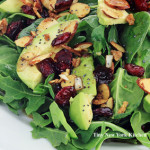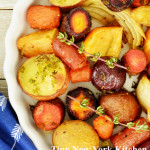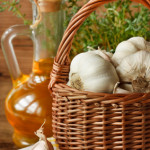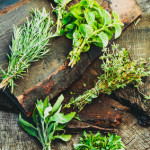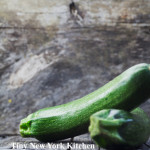Most vegan foods are quite obvious, but it’s important to check the label for ingredients like egg whites, gelatin, honey, or milk.
When in doubt at a restaurant, ask your server to confirm your order is vegan. Dishes are often enriched with non-vegan ingredients like chicken stock or fish sauce.
Rather than focus on what you can’t eat, celebrate what you can. Vegans can enjoy a wide range of foods, including all fruits and vegetables, beans and other legumes, pasta and grains, soy-based foods like tofu and tempeh, and herbs and spices.
“Work With What You Got!”
©Tiny New York Kitchen © 2019 All Rights Reserved
To flavor your food reach for herbs and spices rather than high-sodium table salt. Make sure to read the labels of seasoning mixes because many of them contain salt.
Seasoning Suggestions
Pasta: Basil, Fennel, Garlic, Paprika, Parsley, Sage
Potatoes: Chives, Garlic, Paprika, Parsley, Rosemary
Rice: Cumin, Marjoram, Parsley, Saffron, Tarragon, Thyme, Turmeric
Seafood: Chervil, Dill, Fennel, Tarragon, Parsley
Vegetables: Basil, Caraway, Chives, Dill, Marjoram, Mint, Nutmeg, Oregano, Paprika, Rosemary, Savory, Tarragon, Thyme
“Work With What You Got!”
©Tiny New York Kitchen © 2019 All Rights Reserved
This Year Tiny New York Kitchen Is Focusing On How To Get More Vegetables Worked Into A Regular Diet.
Ease Into The New Year With Delicious Salads
“Work With What You Got!”
©Tiny New York Kitchen © 2019 All Rights Reserved
Whether you’re hosting your first Thanksgiving or you’ve been making the family feast for decades, refer to our Thanksgiving timeline checklist to keep your prepping, shopping, and cooking on track for the big day.
1 TO 2 WEEKS BEFORE THANKSGIVING
Confirm the number of guests and plan your menu
Order your turkey
Plan your table setting, serving dishes, and decorations
Read through all your recipes to determine the food and cooking equipment you will need
Make your shopping and to-do lists
Shop for nonperishable food items, plus any cooks’ tools, cooking equipment and tableware you need
A FEW DAYS BEFORE
Prepare the turkey brine, but do not add the turkey, cover and refrigerate
Prepare food that can be made several days ahead of time, such as pie pastry and cranberry sauce
THE DAY BEFORE
Complete your food shopping
If you ordered a fresh turkey, pick it up or have it delivered
If you are brining the turkey, place it in the brine and refrigerate
Prepare dishes that can be made in advance such as soups and pies
Chop vegetables for side dishes; refrigerate in covered bowls or sealable plastic bags
Peel and cut the potatoes, place in cold water and refrigerate
Set the table
THANKSGIVING DAY
Refrigerate wines that need chilling
Prepare the stuffing and other side dishes
Prepare the turkey for roasting and put in the oven at the determined time
If you plan to stuff the turkey, do not stuff it until just before you put it in the oven
While the turkey is roasting, make the mashed potatoes
While the turkey is resting, make the gravy and cook or reheat the side dishes
Carve the turkey and serve your guests
Have a wonderful Thanksgiving!
“Work With What You Got!”
©Tiny New York Kitchen © 2018 All Rights Reserved
This fall Tiny New York Kitchen celebrates sweet parsnips, earthy beets, and mild turnips. These root vegetables offer flavor, nutrition, and versatility.
Look for root vegetables that are firm to the touch with smooth, blemish-free skin. If there are any greens attached, make sure they look fresh, not wilted.
Before storing parsnips, beets, and turnips, remove any greens and brush off any dirt. Wrap in a damp paper towel, place in a plastic bag, and store in the refrigerator crisper; most roots will last up to two weeks.
Root vegetables absorb nutrients from the soil they grow in, including antioxidants, iron, and vitamins A, B, and C. They also provide fiber, which helps you feel fuller longer. To maximize your fiber intake, leave the skin on and give parsnips and carrots a good scrub instead.
Parsnips: These pale, carrot-like root vegetables are sweet and earthy. They can be roasted, sautéed, mashed, and puréed. Choose small to medium parsnips, since larger ones can be woody.
Beets: Beets can be red, golden, or striped. Whether roasted, boiled, or steamed, they’re slow to cook, but packaged precooked versions are also an option. You can even enjoy beets raw. Simply peel and grate or thinly slice.
Turnips: Creamy white with pinkish-purple tops, turnips turn mellow and tender when cooked. Try them roasted, sautéed, mashed, or added to soups and stews.
Greens: If you’re lucky, your beets and turnips will have greens attached. These edible, nutritious, and delicious greens should always be removed for storage, as they pull moisture from the root ends. Wash the greens and use to make pesto, or sauté with garlic and oil for a quick side dish or simple pasta.
“Work With What You Got!”
©Tiny New York Kitchen © 2018 All Rights Reserved
How to cook rich, perfectly roasted winter squash without any prep work. This method works for winter squash of any size, so adjust the roasting time as needed.
Preheat oven to 400 degrees.
Roast the whole squash on a baking sheet until the skin is papery and a fork inserted into two or three different spots reveals very tender flesh (45 minutes per pound).
Remove from oven and set aside until cool.
Breakfast. Lunch. Dinner. Have squash for them all!
Start by cooking a whole winter squash.
Breakfast
Add cooked cubes of butternut squash, grated Gruyere cheese and chopped sage to a frittata mixture.
Lunch
Meal-prep lunches by layering cooked spaghetti squash, marinara sauce and meatballs or shredded chicken.
Dinner
Add thick slices of cooked acorn squash (you can keep the skin on) to soup or stew during the last few minutes of cooking.
“Work With What You Got!”
©Tiny New York Kitchen © 2018 All Rights Reserved
What’s the deal with pre-minced garlic?! Here at Tiny New York Kitchen we’re generally not big fans of buying already prepped vegetables, but jarred minced garlic is actually the worst. Stored in water or oil and kept shelf-stable with the help of chemical preservatives, it smells and tastes like a bad joke about garlic. Bitter and funky (and not in a good way), it’s the stuff that gives the allium a bad name.
“Work With What You Got!”
©Tiny New York Kitchen © 2018 All Rights Reserved
Fresh herbs have delighted the senses and tantalized the taste buds for centuries. In medieval times great bundles of herbs were strewn on castle floors as a natural air purifier. Brides often chose to wear delicate crowns of flowers interwoven with herbs upon their heads, and both Western and Eastern medical practitioners may employ herbal remedies for their patients.
Many cooks are quite passionate about utilizing herbs in their favorite recipes. Especially bountiful herbs, which perfume our summer and fall gardens with beautiful scents and enhance the plate with their wonderful array of flavors. Using fresh herbs allows cooks to cut back on unnecessary salt, fat, and sugars, while naturally elevating main ingredients.
Brimming with health benefits, each herb plays a special role in beautifying and fortifying the body. Rosemary, for example, may improve memory. Parsley is packed with apigenin, which could potentially reduce the chances of cancerous growths and tumors. Oregano, like all other herbs, has anti-inflammatory properties that may reduce joint inflammation. Oregano is also particularly anti-bacterial and anti-fungal, and can contribute to flawless skin and glossy hair. The calcium content in basil and parsley can help maintain healthy teeth. Mint is calming and soothing and can be a digestive aid. The heady aroma of fresh herbs may help relieve any effects of nausea, as well as soothing and reviving the senses.
Basil’s affinity with tomatoes is a most engaging taste combination. Serve sun warmed tomatoes sprinkled with shards of fresh basil leaves and drizzled with olive oil. The slightly sharp bite of chives enlivens potatoes, eggs and salad dressings. Cilantro is a must for Mexican and Asian dishes. Dill adds a light, lovely layer to fish, while the snappy tang of parsley is delightful in tabouli, potato salad, and pasta. Mint is essential for tall glasses of cold ices tea or lemonade and also for embellishing summer fruit platters. Transport your taste buds by making a salad with a bounty of vegetables and a large handful of freshly minced oregano, basil, parsley, and dill. Or scent your grill with the woody stalks of rosemary. They make great skewers, infusing meat, fish, and vegetables with bright, strong flavors.
Clean herbs by soaking in a bowl of cool water, changing the water several times, or until you no longer see any dirt in the bottom of the bowl. Spin dry in a salad spinner or on layers of paper towels. For hot dishes, add herbs at the end of cooking time to avoid diluting their essence.
“An herb is the friend of physicians and the praise of cooks.” – Charlemagne
www.tinynewyorkkitchen.com
“Work With What You Got!”
©Tiny New York Kitchen © 2018 All Rights Reserved
Zucchini is wonderfully versatile, healthy, and contains only 25 calories per small zucchini. Low in sodium, cholesterol free and is an excellent source of vitamin C and manganese. Leave the thin skin on for all preparations. It’s a good source of dietary fiber. Store unwashed zucchini in a plastic bag, in the vegetable compartment of the refrigerator, for no more than three days, for optimal freshness.
“Work With What You Got!”
©Tiny New York Kitchen © 2018 All Rights Reserved




